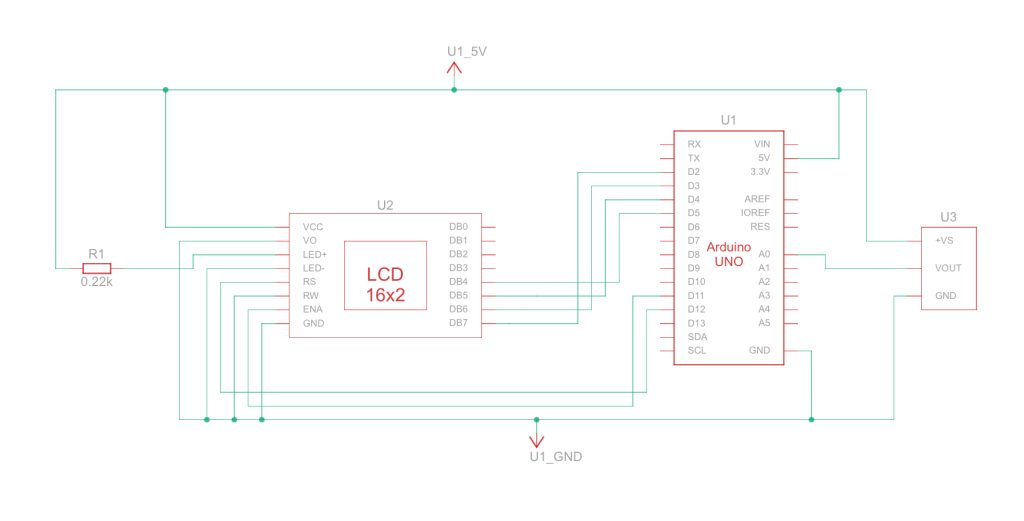Arduino Room Temperature Monitoring System


The Arduino Room Temperature Monitoring System is designed to measure and display the ambient temperature of a room using a temperature sensor.
This project is ideal for applications like home automation, climate control, or simply keeping track of room conditions.
Component List:
| Name | Quantity | Component |
|---|---|---|
| U1 | 1 | Arduino Uno R3 |
| U2 | 1 | LCD 16 x 2 |
| R1 | 1 | 0.22 kΩ Resistor |
| U3 | 1 | Temperature Sensor [TMP36] |
Temperature Sensor (e.g., TMP36): The analog temperature sensor is connected to one of the analog pins on the Arduino board to measure the room temperature.
LCD Display (RS, EN, D4-D7): A Liquid Crystal Display is employed to show the real-time room temperature readings obtained from the temperature sensor.
Arduino Board: Acting as the brain of the system, the Arduino reads the analog signals from the temperature sensor, processes the data, and then displays the temperature on the LCD.
Arduino Code:
#include <LiquidCrystal.h>
int tmpPin = A0;
int rs = 12, en = 11, d4 = 5, d5 = 4, d6 = 3, d7 = 2;
LiquidCrystal lcd(rs, en, d4, d5, d6, d7);
void setup() {
lcd.begin(16, 2);
}
void loop() {
int reading = analogRead(tmpPin);
float voltage = reading * 5.0 / 1024.0;
float temperature = (voltage - 0.5) * 100;
lcd.setCursor(0, 0);
lcd.print(temperature);
delay(1000);
}The Arduino Room Temperature Monitoring System provides an accessible solution for monitoring and displaying room temperature. It can serve as a foundation for more advanced home automation projects or be expanded to include features like data logging or remote access.
This project is beginner-friendly, offering insights into sensor integration, analog signal processing, and real-time data display. It’s a practical and educational application for those interested in creating a simple yet effective temperature monitoring system for their living or working spaces.





